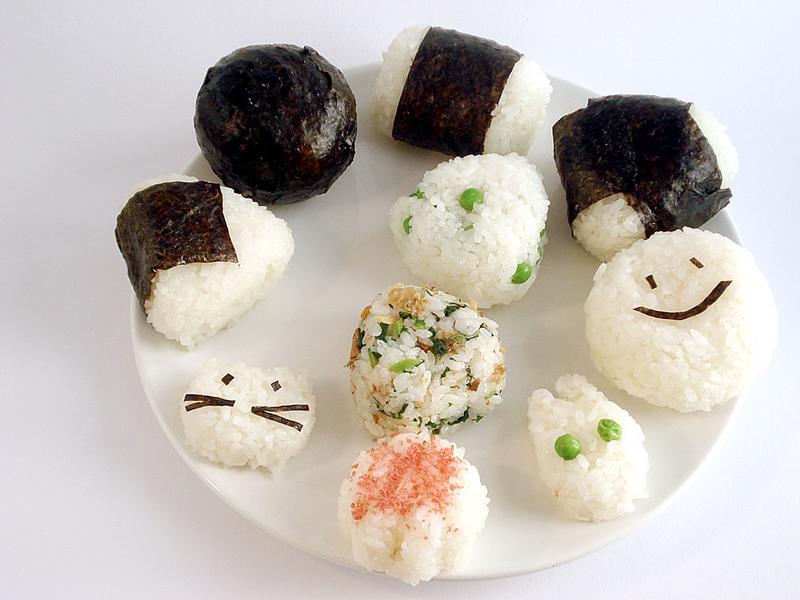
Onigiri (or omusubi, the other name for the same thing), the cute little rice ball, has really become popular outside of Japan in the last few years, in large part it seems due to its iconic status in anime and manga. While the onigiri is not limited in Japanese food culture to just bento use, it's an indispensable part of the bento maker's repertoire.
Previously on Just Hungry, I've explained how to make onigiri twice: the traditional, hot salty palms way, and an easier method using plastic wrap and a cup. And you can always use a plastic onigiri mold if neither method appeals. However, I have never really gone into depth about the different shapes and kinds of onigiri. So, here it is - a parade of different kinds of onigiri: shapes, coverings, fillings, and more.